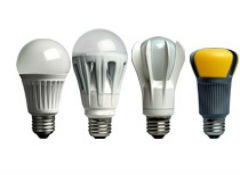Replacing a lightbulb isn't as easy as it used to be. The new energy-saving bulbs may not give off the type of light you're used to. In fact, some of the compact fluorescents and light-emitting diodes in Consumer Reports lightbulb tests give off a ghastly light color, or are dim. And there are some CFLs that take three minutes to fully brighten—that's enough time to make toast. But among the duds we also found bulbs that dazzled. Here are four lightbulb letdowns and how to avoid them.

Dim bulbs
More lumens. Check the Lighting Facts label on the packages of CFLs and LEDs for the number of lumens. The higher the lumens the brighter the bulb. When replacing a 60-watt incandescent look for an energy-saving bulb with at least 800 lumens, and 1,100 lumens or more for a 75-watt replacement. If you're wondering about watts, they tell you how much electricity the bulb uses so choose a bulb with enough lumens and the lowest wattage.
Weird light color
The right Kelvin (K) number. Light color is expressed by its Kelvin temperature. The higher the Kelvin number the cooler the light. If you prefer the warm light of an incandescent but want to trim your electric bills, pick a CFL or LED marked 2700K or so on the Lighting Facts label. At 3000K the light is whiter, like a halogen bulb, and it's cool and bright white at 3500K to 4100K. For bluer light buy bulbs marked 5000K to 6500K.
Unflattering light
A higher CRI. When the colors of things look off, find out the color rendering index of your lightbulbs. CRI indicates how accurately a lightbulb displays colors and the higher the better. Incandescent bulbs are at or near 100; most CFLs and LEDs we tested are in the low-to-mid 80s. CRI isn't on the Lighting Facts label but may appear elsewhere on the package and some online retailers note it.
Early burnout
Return the bulb to the retailer, or contact the manufacturer. You may need the model number or UPC and a receipt. And when you're buying replacements be sure the bulbs can be used in your fixtures. Putting a CFL or LED in a fixture it's not meant for can shorten its life.





